Auranofin targets UBA1 and enhances UBA1 activity by facilitating ubiquitin trans-thioesterification to E2 ubiquitin-conjugating enzymes
- PMID: 37558718
- PMCID: PMC10412574
- DOI: 10.1038/s41467-023-40537-x
Auranofin targets UBA1 and enhances UBA1 activity by facilitating ubiquitin trans-thioesterification to E2 ubiquitin-conjugating enzymes
Abstract
UBA1 is the primary E1 ubiquitin-activating enzyme responsible for generation of activated ubiquitin required for ubiquitination, a process that regulates stability and function of numerous proteins. Decreased or insufficient ubiquitination can cause or drive aging and many diseases. Therefore, a small-molecule enhancing UBA1 activity could have broad therapeutic potential. Here we report that auranofin, a drug approved for the treatment of rheumatoid arthritis, is a potent UBA1 activity enhancer. Auranofin binds to the UBA1's ubiquitin fold domain and conjugates to Cys1039 residue. The binding enhances UBA1 interactions with at least 20 different E2 ubiquitin-conjugating enzymes, facilitating ubiquitin charging to E2 and increasing the activities of seven representative E3s in vitro. Auranofin promotes ubiquitination and degradation of misfolded ER proteins during ER-associated degradation in cells at low nanomolar concentrations. It also facilitates outer mitochondrial membrane-associated degradation. These findings suggest that auranofin can serve as a much-needed tool for UBA1 research and therapeutic exploration.
© 2023. Springer Nature Limited.
Conflict of interest statement
The authors declare no competing interests.
Figures

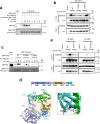
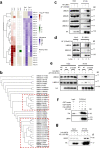
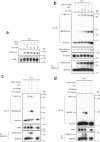
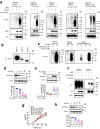
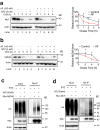
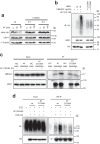
Similar articles
-
New ubiquitin-dependent mechanisms regulating the Aurora B-protein phosphatase 1 balance in Saccharomyces cerevisiae.J Cell Sci. 2018 Aug 16;131(16):jcs217620. doi: 10.1242/jcs.217620. J Cell Sci. 2018. PMID: 30054382
-
Orthogonal ubiquitin transfer identifies ubiquitination substrates under differential control by the two ubiquitin activating enzymes.Nat Commun. 2017 Jan 30;8:14286. doi: 10.1038/ncomms14286. Nat Commun. 2017. PMID: 28134249 Free PMC article.
-
S. pombe Uba1-Ubc15 Structure Reveals a Novel Regulatory Mechanism of Ubiquitin E2 Activity.Mol Cell. 2017 Feb 16;65(4):699-714.e6. doi: 10.1016/j.molcel.2017.01.008. Epub 2017 Feb 2. Mol Cell. 2017. PMID: 28162934 Free PMC article.
-
Enzymes of ubiquitination and deubiquitination.Essays Biochem. 2012;52:37-50. doi: 10.1042/bse0520037. Essays Biochem. 2012. PMID: 22708562 Review.
-
The pivotal role of ubiquitin-activating enzyme E1 (UBA1) in neuronal health and neurodegeneration.Int J Biochem Cell Biol. 2020 Jun;123:105746. doi: 10.1016/j.biocel.2020.105746. Epub 2020 Apr 18. Int J Biochem Cell Biol. 2020. PMID: 32315770 Review.
Cited by
-
Auranofin induces disulfide bond-mimicking S-Au adducts in protein thiol pairs.J Biol Chem. 2025 Mar;301(3):108159. doi: 10.1016/j.jbc.2025.108159. Epub 2025 Jan 4. J Biol Chem. 2025. PMID: 39761857 Free PMC article.
-
VEXAS: A review of current understandings and emerging treatment strategies.Front Immunol. 2025 Jul 28;16:1644404. doi: 10.3389/fimmu.2025.1644404. eCollection 2025. Front Immunol. 2025. PMID: 40791602 Free PMC article. Review.
-
The cross talk of ubiquitination and chemotherapy tolerance in colorectal cancer.J Cancer Res Clin Oncol. 2024 Mar 23;150(3):154. doi: 10.1007/s00432-024-05659-9. J Cancer Res Clin Oncol. 2024. PMID: 38521878 Free PMC article. Review.
-
Ubiquitination Insight from Spinal Muscular Atrophy-From Pathogenesis to Therapy: A Muscle Perspective.Int J Mol Sci. 2024 Aug 13;25(16):8800. doi: 10.3390/ijms25168800. Int J Mol Sci. 2024. PMID: 39201486 Free PMC article. Review.
-
The Role and Mechanism of Protein Post‑Translational Modification in Rheumatoid Arthritis.J Inflamm Res. 2025 Jul 11;18:9055-9078. doi: 10.2147/JIR.S528487. eCollection 2025. J Inflamm Res. 2025. PMID: 40666378 Free PMC article. Review.
References
Publication types
MeSH terms
Substances
Grants and funding
LinkOut - more resources
Full Text Sources
Research Materials
Miscellaneous

